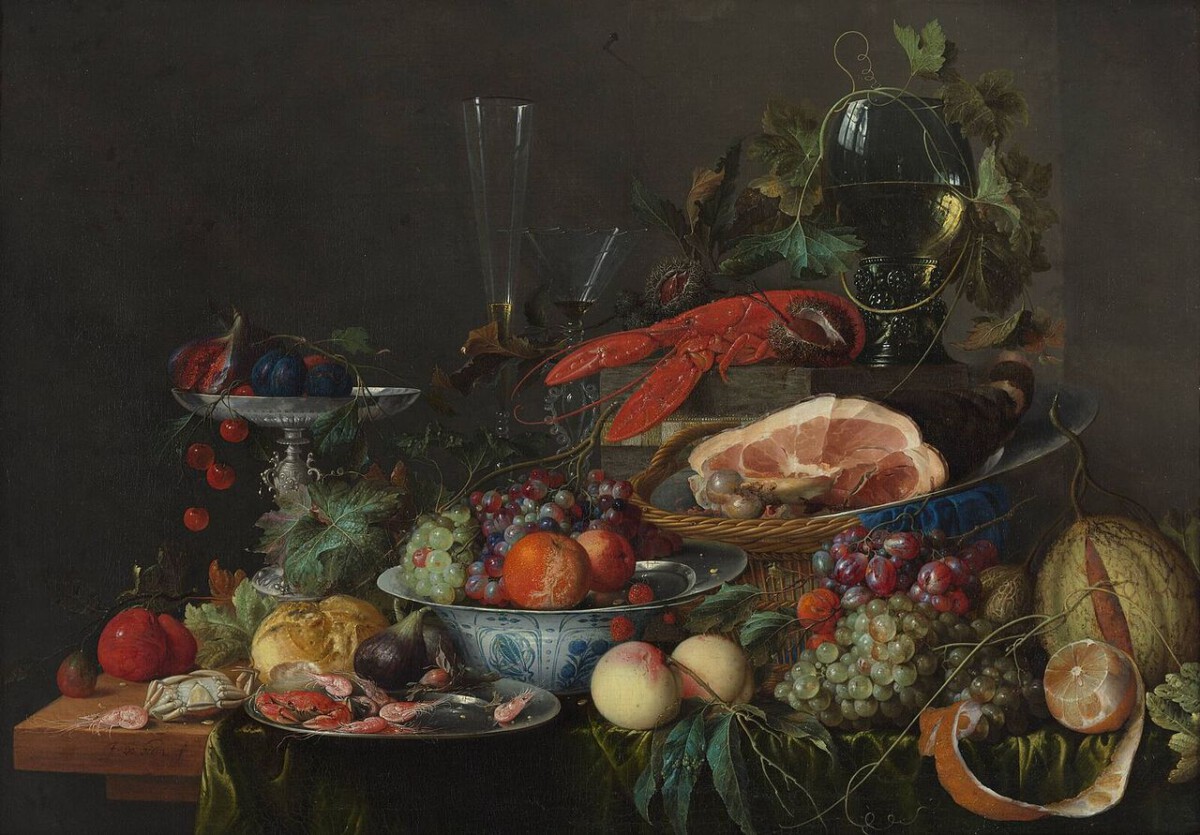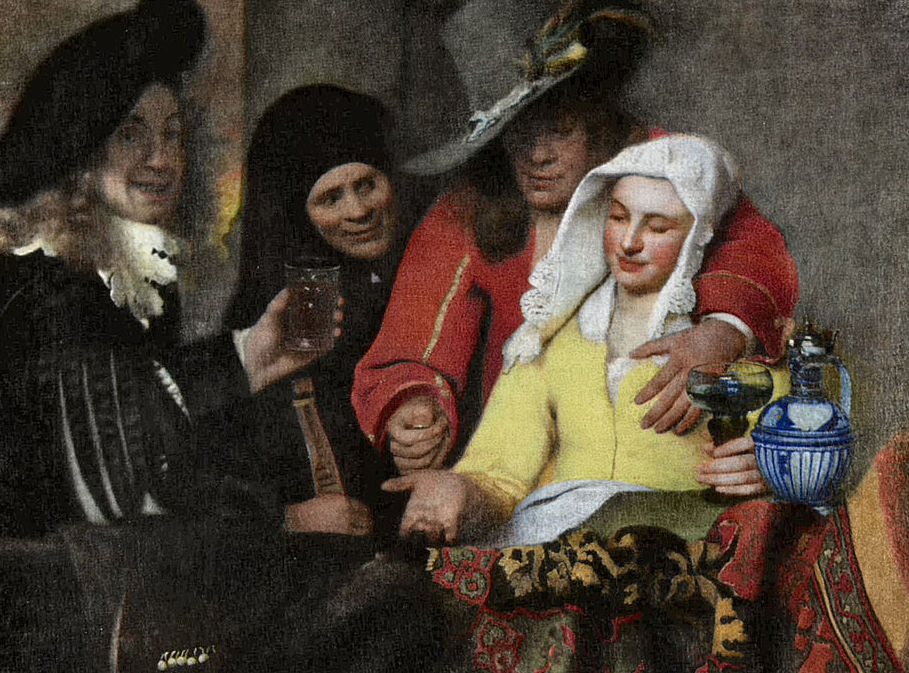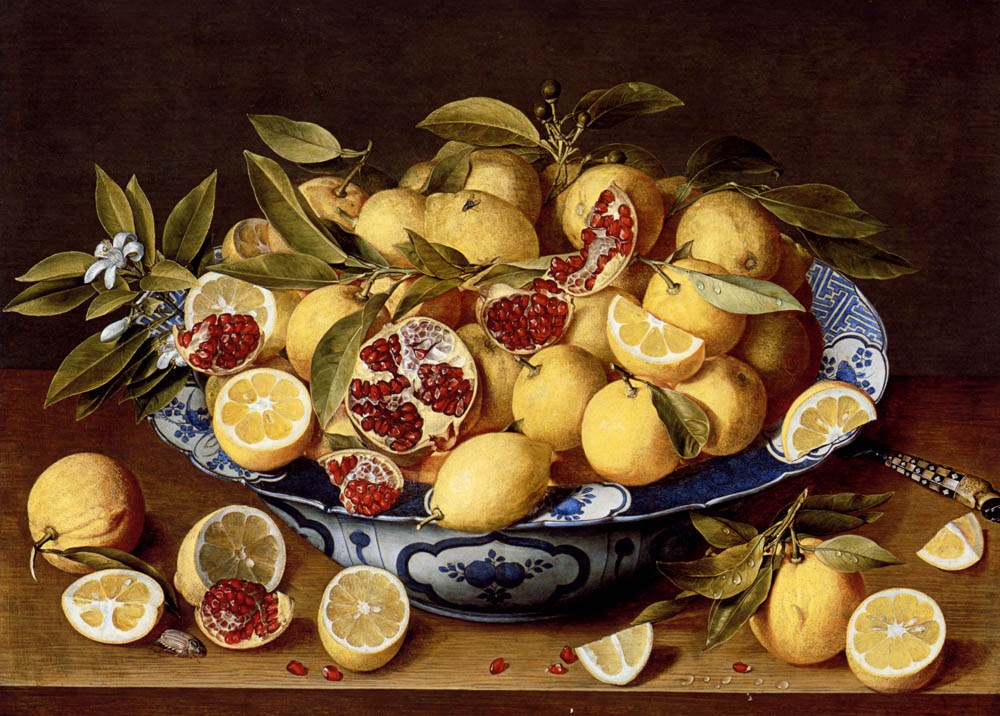You know those tattoo fails where people commission tattoo designs written in another language that result in hilarity due to misspelling or misinterpretation? Imagine that — but with Chinese porcelain imported to the Netherlands.
This kind of cultural blunder has been happening throughout history. The custom-made Chinese export porcelain commissioned by the VOC in the 17th century is a prime example.
But, instead of becoming a laughing stock of the internet like that one tough guy’s Chinese Kanji tattoo which means “chicken noodle soup”, these porcelains are beautiful works of art that reflect the diversity and complexity of cultural exchange between the East and the West.
An odd mix
From the 17th to the mid-18th centuries, a large number of Chinese export porcelains were sold to Europe via the Maritime Silk Road. The VOC (Dutch East India Company) imported many custom-made porcelains with distinctive shapes and decorations that stood out from the rest.
READ MORE| Dutch Museums to actively return art looted during colonial times
These porcelains not only blended traditional shapes of European potteries and exotic Chinese themes, but also created decorations which interpreted European paintings from a Chinese perspective, resulting in aesthetically pleasing yet still “weird-looking” pieces of art.
The “porcelain fever”
In the first half of the 17th century, a “porcelain fever” arose in Europe. Roughly three million pieces of Chinese porcelain were sold to European countries by the VOC during that time.
Such a huge influx of goods made the once rare and expensive “collector’s item” that was Chinese porcelain into a common household object in middle-class families. This is why you can spot many Chinese porcelains in European paintings around from this time period.

No longer a luxury item, the price of the Chinese porcelain decreased, bringing up less profits for the VOC. Naturally, as a profit-oriented megacorporation dominating the global trading scene, the VOC figured out other ways to rekindle the public’s interest and meet the diverse market demands.
European shapes with Chinese themes
Since the Chinese porcelain lost its status as an exotic luxury item, it made sense to make it into an actual usable item with even more exotic decorations that appealed to the public’s wild imagination of China.
Subsequently, the VOC made several requests regarding the shape, decoration and colour of the porcelain produced in China. Large quantities of custom-made Chinese porcelains were then made according to the VOC’s demands.
Letters from the VOC from 1630 to 1640 stated that porcelains with detailed depictions of Chinese elements were very much desired. The Dutch merchants also brought pottery that Europeans used in daily life for Chinese ceramicists to use as samples.
More specific demands included that large pieces of porcelain needed to depict curious images, such as Chinese people riding horses, rivers, landscapes, houses, ships, and animals, most of which were favored subject matters of the European public.
Additionally, Dutch elements such as tulips and leaves were to be avoided since porcelains with European elements weren’t as much a novelty and sold for less than half the price.
Custom-made porcelains like these can also be seen in old paintings, such as this water jar with a narrow neck in Johannes Vermeer’s painting The Procuress, an imitation of the famed Westerwald Pottery design. (Johannes Vermeer is the painter of the Girl with a Pearl Earring, by the way.)

Employee benefits
In the early 18th century, some customization requirements for Chinese export porcelain took on a new direction. Employees of the VOC usually enjoyed the privilege to bring back a certain amount of foreign goods for either personal need or private trade.
The senior officials of the VOC in Guangzhou, for example, were allowed to bring home five boxes of tea or porcelain. Thus, they utilised this advantage to commission porcelains with a more distinctive style.
Because these porcelains were made as personal souvenirs of the merchants’ journey to the East, something that you could put on display for friends and families to marvel at, they needed to reflect personal tastes or have deeper meanings.
As a result, these privately commissioned porcelains usually have decorations that depict European subjects, such as famous paintings, religion, myths, historical events, seascapes, etc.
Lost in translation
The problem was, even though the Dutch commissioners provided clear reference materials like European paintings, the Chinese painters, who were unfamiliar with European culture, inevitably misinterpreted some metaphors in the original paintings and made improvements based on their traditional Chinese aesthetics.
Thus, some porcelains from that time have seemingly normal depictions of classic European landscapes. But upon closer inspection, you can spot out-of-place Chinese elements such as lucky clouds, plum blossoms, and even mountains, the one thing that the Netherlands definitely doesn’t have.
Sometimes, alterations were made to clothing as well, creating an interesting hybrid of fashion.
We want the family crest on it
As early as the mid-16th century, Portuguese royalties were commissioning porcelains decorated with family crests or coats of arms from China. The practice of adding them to silverwares and displaying them at home had long been a tradition in Europe to show off family heritage and status.
So, when Chinese exported porcelain flooded the Dutch market in the 17th century, porcelains with family or institutional coats of arms became a new market demand. And by the 18th century, the Netherlands had imported more than 500 sets of heraldic porcelain with family crests. The commissioners of such porcelains were mostly aristocrats or high officials with ties to the VOC, far above the middle class.
Not exactly picture perfect
To make such heraldic porcelains, commissioners usually gave very detailed drawings and supplementary instructions to Chinese painters about how to accurately create the design of the coat of arms.
Unfortunately, some heraldic porcelains still didn’t perfectly represent the original design due to language barrier and cultural misunderstanding.
In some instances, the commissioner would mark certain areas on the design with words like “red” and “green”, instructing the Chinese painter to fill these areas with said colours. However, the Chinese painter, who didn’t speak English, would literally write the words down on these areas and fill them with whatever colour they deemed appropriate.
The Dutch are equally guilty
These mistakes were a mutual occurrence on both sides. As it turned out, on some Delftware which imitated Chinese export porcelain in the 17th century, Chinese characters were drawn by Dutch painters with arbitrary strokes that resembled nothing but illegible scribblings. At least they don’t mean “chicken noodle soup.”
Have you seen any porcelain that just look a bit odd? Are there other examples of cultural misunderstanding like this? Let us know in the comments below!
Bibliography:
孙晶.(2020).十七至十八世纪荷兰定制外销瓷装饰风格探析. 世界美术(02),88-93. doi:10.13318/j.cnki.sjms.2020.02.013.
Blussé, L., & Van Luyn, F. J. (2008). China en de Nederlanders. Walburg Pers.
Feature Image: Jacob Van Huisdonck/Wikimedia Commons/Public Domain


